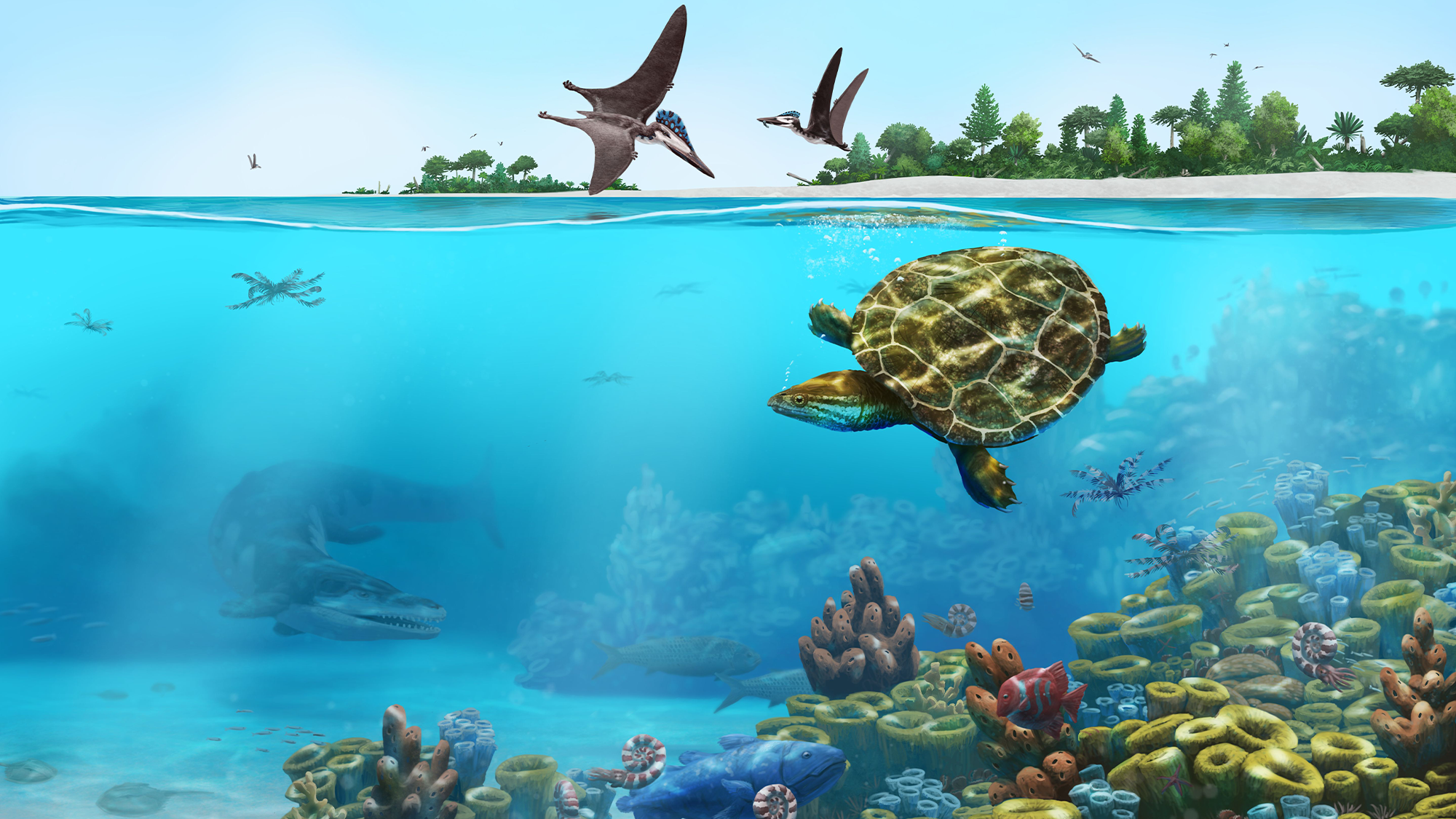

A flattened—but still mostly complete—turtle fossil from the late Jurassic period was just unearthed in present-day Germany. Now, the flat-as-a-pancake specimen of Solnhofia parsonsi is helping paleontologists learn more about how these reptiles evolved and lived in the more shallow marine ecosystems.The findings were described in a study published July 26 in the journal PLOS ONE.
[Related: Gigantic fossils hint at super-sized 7,000-pound sea turtle.]
“The very good preservation of the fossils in the layers of limestone can be explained by the environmental conditions at the time,” co-author and University of Tübingen paleoecologist Andreas Matzke said in a statement.
S. parsonsi lived in a Bavaria that looked and felt quite different from the region today. About 150 million years ago, the region in southern Germany near Munich was a shallow tropical archipelago with spongey reefs around it. When animals like S. parsonsi died in these salty and low oxygen bodies of water, scavengers had a difficult, if not impossible, time picking apart their remains, leading to well preserved specimens like this turtle pancake.
As demonstrated by this specimen, the turtle’s forelimbs and hind limbs are comparatively short, which suggests that it lived near the coast. This differs from today’s sea turtles, who have long flippers and live in the open sea.
“No Solnhofia individual with such completely preserved extremities has ever been described before,” study co-author and paleontologist at the University of Tübingen Felix Augustin said in a statement.
The turtle’s head and carapace (upper back) are also clearly preserved in the fossil. S. parsonsi had a long and pointed beak and a triangular heat that was about 3.5 inches long.

“Solnhofia may have used its large head to crush hard food items such as shelled invertebrates, as we see in some modern turtles, but it does not mean these were exclusively forming its diet,” said co-author and University of Tübingen paleontologist Márton Rabi said in a statement.
[Related: Hungry green sea turtles have eaten in the same seagrass meadows for about 3,000 years.]
The diamondback terrapin is the closest modern analogue to S. parsonsi. This somewhat salt tolerant turtle with a diamond pattern on its shell lives in brackish estuaries in the East Coast of the United States.
S. parsonsi is not the first notable fossil uncovered in the limestone deposits of Solnhofen, a spot south of the city of Nuremberg in the valley of the Altmühl. Paleontologists have dug up fossils of some of the earliest birds called Archaeopteryx and numerous pterosaurs and other marine reptiles. This area is also considered one of the most important sites for Mesozoic fossils, which began about 250 million years ago and lasted until the extinction of the dinosaurs roughly 66 million years ago.
